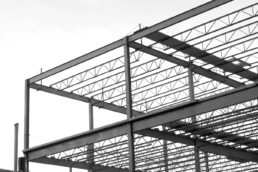Advantages of Steel for Construction: Why Steel is the Ideal Building Material
Steel is a popular choice for construction projects, and for good reason. With its many advantages over other building materials, it has become the go-to option for engineers, architects, and builders worldwide. In this blog, we’ll discuss why steel is better for construction and explore some of the benefits it offers.
Strength and Durability
One of the most significant advantages of steel is its strength and durability. It is a robust material that can withstand harsh weather conditions, natural disasters, and heavy loads. Steel structures can last for decades, making them an ideal choice for buildings that need to be sturdy and long-lasting. Additionally, steel is resistant to fire, rot, and pests, which helps to reduce maintenance and repair costs.
Flexibility and Versatility
Another advantage of steel is its flexibility and versatility. Steel can be fabricated into various shapes and sizes, making it an ideal option for complex structures and designs. This flexibility allows architects and builders to create innovative and unique structures that would be impossible with other building materials. Steel can also be easily modified and expanded, making it an excellent option for buildings that need to adapt to changing needs over time.
Cost-Effective
Steel is also a cost-effective option for construction projects. While it may have a higher upfront cost than other building materials, such as wood or concrete, it provides long-term savings in maintenance and repair costs. Steel structures are also faster to build, reducing labor costs and allowing for quicker project completion times. Additionally, steel is a recyclable material, reducing waste and environmental impact.
Safety
Safety is a significant concern in construction, and steel offers several advantages in this regard. Steel structures are resistant to fire and can withstand high winds, earthquakes, and other natural disasters, making them a safer option for buildings located in areas prone to these hazards. Additionally, steel structures are less prone to collapse, reducing the risk of injury or loss of life in the event of an accident.
Sustainability
Finally, steel is a sustainable building material. As mentioned earlier, steel is recyclable, reducing waste and environmental impact. Additionally, steel structures can be designed to be energy-efficient, reducing energy consumption and lowering carbon emissions. This sustainability makes steel an ideal option for buildings seeking to achieve LEED certification or other green building standards.
In conclusion, steel offers many advantages over other building materials for construction projects. Its strength, durability, flexibility, cost-effectiveness, safety, and sustainability make it an ideal option for buildings of all types and sizes. Whether you’re building a skyscraper, a bridge, or a residential home, steel is an excellent choice that will provide long-term benefits and value.


